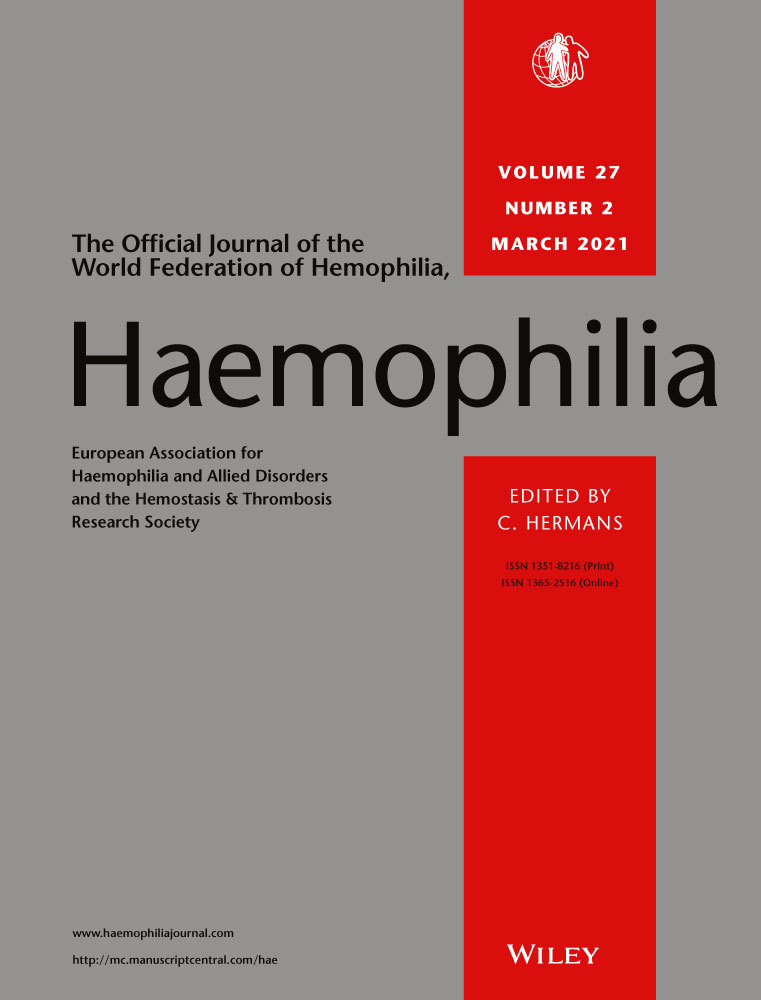Aquatic exercise in patients with haemophilia: Electromyographic and functional results from a prospective cohort study
Abstract
Introduction
Recurrent joint bleeds in haemophilia patients often cause musculoskeletal changes leading to functional capacity impairment.
Aim
In this study, we assessed the effects of aquatic activities performed to improve functional capacity in these patients.
Methods
The interventional protocol consisted of 24 hydrotherapy sessions during three months, in comparison with 24 swimming sessions. The pre- and post-intervention assessment consisted of Functional Independence Score, haemophilia joint health score (HJHS), Pediatric Haemophilia Activities List (PedHAL), surface electromyography (SEMG) of thigh muscles to assess muscle electric activity, and load cell on extensor and flexor thigh muscles to evaluate muscular strength.
Results
Forty-seven haemophilia patients were enrolled in this study, and 32 (23 severe haemophilia A, one moderate haemophilia A and 8 severe haemophilia B), median age 12y (6 to 40y), concluded the aquatic intervention. We observed a statistically significant increase with substantial improvement in functional capacity in the pre- and post-intervention evaluation of hydrotherapy in comparison with the swimming protocol, with HJHS (p = .006 and p = .001 respectively), PedHAL (Sum score) (p = .022 and p = .001) and score FISH (p = .021). The swimming group revealed significant improvements in muscular strength, in all muscles tested (p = .005 and p = .001). SEMG signal amplitude reached significantly higher levels in all muscles evaluated after both interventions except for the vastus medialis (right) in the hydrotherapy group.
Conclusion
Our results concluded that both swimming and hydrotherapy were associated with physical improvement in haemophilia patients; however, only hydrotherapy lead to a more significant improvement in functional capacity.
CONFLICT OF INTEREST
MCO received research funding from Bioverativ-Sanofi, BioMarin, Novo Nordisk, Pfizer, Roche and Shire-Takeda; and provided consultancy for and/or has been on the speakers’ bureau for Bioverativ-Sanofi, BioMarin, Novo Nordisk, Pfizer, Roche and Shire-Takeda.
Open Research
DATA AVAILABILITY STATEMENT
Based on the examples of statements provided and the nature of the research data, the data supporting the conclusions of this study are available with the author for correspondence upon request; however, they are not publicly available due to privacy or ethical restrictions.




